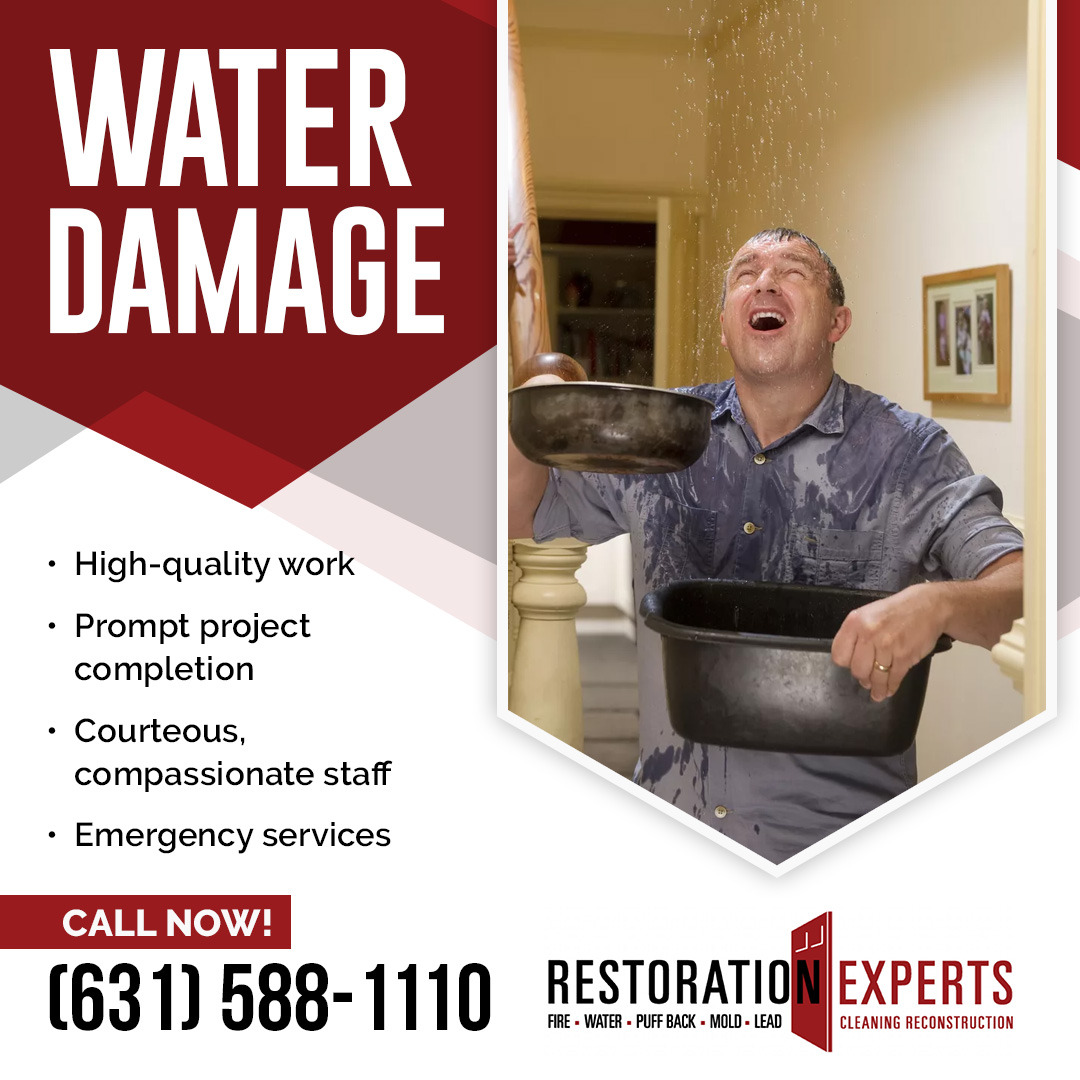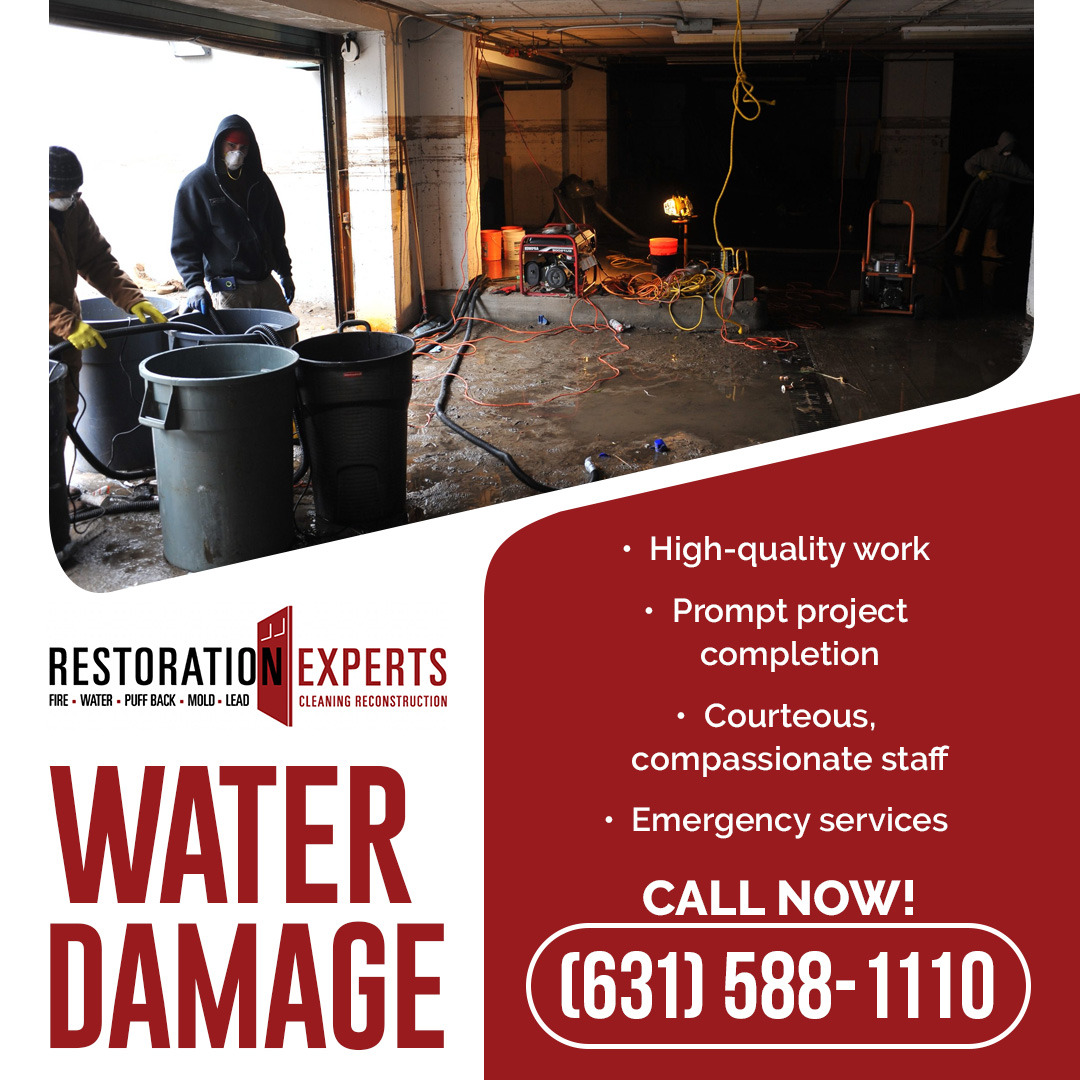For over twenty-five years, Restoration Experts has been serving the Ronkonkoma and Long Island area of New York with water damage, fire damage, puff back damage, and other property damage restoration and cleaning services. The team of property damage restoration and cleaning experts care deeply about their customers. A property damage disaster is traumatic in its impact, disrupting every facet of life until the damage is repaired. At Restoration Experts, they strive to restore and repair a damaged property as quickly as possible so life can return to normal.
How Water and Moisture Can Damage a Home or Building
Preventing water damage is one of the key ways to ensure that a home or other building has durability and longevity. Homeowners of energy-efficient homes need to be aware of the reality that their thermally efficient dwelling does not dry out as readily and quickly as the energy-inefficient houses of the past.
There are several reasons for this slowness to dry out and the corresponding vulnerability to water damage. First, more modern engineered lumber products are not very tolerant of frequent exposure to moisture and water. The water damage is concealed under wood finishes. If not noticed and dealt with promptly, the water damage produces long-term negative impacts on indoor air quality.
Moisture and water are necessary for life, but they are also destructive forces, causing devastating water damage to homes and buildings. Here are three ways that water can destroy homes and buildings in the Ronkonkoma and Long Island area of New York.
1. Bulk water, usually rain, can cause water and moisture damage.
Precipitation, such as rain, sleet, snow, and hail, is the most common cause of water damage. Rain is the main culprit and finds its way into a home through many avenues, including:
- Leakage at walls near windows and doors
- Water seeping through porous basement walls
- Roof leaks from storm damage to shingles, fallen tree limbs, and errors in the installation of flashing
- Catastrophic plumbing failures
One of the best ways to combat bulk water leaks is for the homeowner to practice consistent routine maintenance. For homeowners engaging in new construction, seek out a builder who is serious about preventing water damage at the point of construction. Does the builder perform blower tests to determine the integrity of doors to keep out moisture and water?
Basement leakage is a common avenue for water to enter a home and cause water damage. Design and installation considerations for basements at the point of construction can go a long way in preventing future water damage. Anticipating potential issues and engaging prevention strategies can save untold thousands of dollars in water damage and provide peace of mind for the homeowner.
2. Air leaks can cause moisture damage.
Unrestrained random air leaks allow moisture-laden air to enter a structure. The moist air results in condensation on surfaces. Though the moisture content is minimal, it adds up over time, resulting in water damage and possibly mold infestation. Attic hatches are a major source of air leaks into the attic. Some basic weather stripping and caulking applications can improve the ability of the hatch to keep out damaging moist air.
Air leaks also cause energy costs to skyrocket, especially in cold, moist areas such as Ronkonkoma and Long Island. Reducing air infiltration and exfiltration is one of the most effective strategies to improve energy savings and decrease negative environmental impacts while making the home more comfortable.
Air leaks have the potential to increase the damage done by bulk water intrusions. Bulk water can get sucked into cracks and holes that are under negative pressure. Windy conditions can exacerbate the situation by pressurizing and depressurizing different areas of the home. The risk of water damage from bulk water intrusions is elevated during windy rain events. A building envelope that reduces or eliminates random airflow will help prevent structural water damage and reduce the potential for mold infestation.
3. Vapor diffusion can saturate a home with hidden water damage.
Masonry, fiber cement siding, and stucco act as sponges for moisture. During wet weather, these materials on the outside of a home can become saturated with water. When the sun comes out and the temperatures rise, the moisture in brick, fiber cement siding, and stucco is driven towards the inside of the home. Interior vapor barriers like vinyl wallpaper trap the moisture and can cause hidden water damage to the wall. Mold may also thrive in the moist region between the wallpaper and the wall. Keeping the interior humidity of the home at 40% or less can help remedy this situation.
Homeowners have positive options that can reduce the risk of water damage from bulk water, air leakage, and vapor diffusion. Apply a weather-resistant barrier to bricks and stucco that restricts moisture absorption and reduces the risk of water damage. The weather barrier also increases the durability of the bricks or stucco.
When water damage or mold damage occurs, contact Restoration Experts, a locally owned and operated property damage restoration company serving Suffolk and Nassau Counties, including Ronkonkoma and Long Island. The company offers fire damage, water damage, puff back damage, and cleaning services. Connect to twenty-four-hour live calls. A response is guaranteed in one hour.
To learn more about water damage restoration near Ronkonkoma and Long Island, call Restoration Experts at 631-588-1110.
source https://restorationexperts.com/press-releases/how-water-and-moisture-cause-serious-water-damage-to-homes/






No comments:
Post a Comment